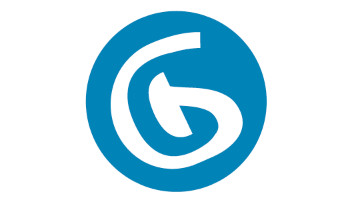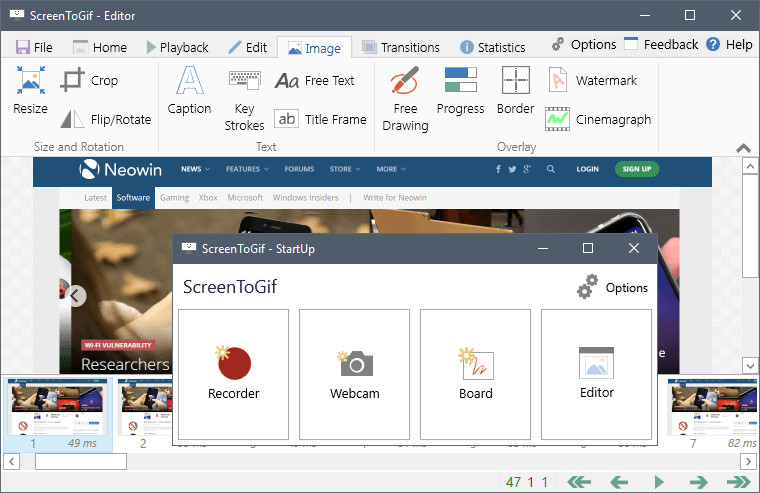The Northern Runway at Zayed International Airport (AUH) has been reopened earlier than anticipated following a comprehensive rehabilitation program. The runway, designated 13L/31R, is now fully operational for both arrivals and departures, marking a significant milestone in Abu Dhabi’s aviation infrastructure. The project delivered a robust upgrade that enhances durability, safety, and efficiency, ensuring AUH can better accommodate growing air traffic while supporting the UAE’s broader aviation ambitions. The early restoration was achieved through meticulous planning, coordinated execution, and a steadfast focus on achieving high standards of performance and sustainability. As the aviation sector continues to evolve, AUH’s upgraded Northern Runway stands as a pivotal asset in maintaining uninterrupted international connectivity and supporting the region’s economic dynamism.
Overview of the Northern Runway Reopening and Rehabilitation
The reopening of the Northern Runway represents a strategic achievement for Abu Dhabi Airports and the UAE’s aviation ecosystem. After a period of closure for rehabilitation, the runway is now back in service for both landings and takeoffs. This transition underscores the project’s dual aim: restore full operational capability promptly and upgrade the runway to meet contemporary demands for safety, efficiency, and resilience. The rehabilitation process encompassed a series of substantial improvements designed to extend the runway’s lifespan and performance under various operating conditions. The most conspicuous outcome is the reinforced and resurfaced pavement, a critical foundation for long-term reliability in an environment characterized by high traffic volumes and diverse weather scenarios. The project employed 210,000 tonnes of asphalt in the resurfacing effort, a figure that highlights the scale and intensity of the work required to deliver a runway capable of withstanding continuous use and evolving aviation requirements.
The completion of this extensive resurfacing, along with structural enhancements, is a testament to the project’s scope and ambition. By prioritizing durability and resilience, the rehabilitation aims to minimize maintenance interruptions and ensure consistent operations across peak periods. The early reopening is emblematic of the meticulous planning that characterized the entire endeavour, reflecting a coordinated approach among the airport operator, the General Civil Aviation Authority (GCAA), and collaborating partners. Throughout the process, the project team balanced the imperative of swift restoration with the necessity of achieving durable, long-lasting improvements that will support AUH’s future growth trajectory. In this way, the Northern Runway project aligns with broader strategic objectives for the UAE’s aviation sector, signaling a commitment to continuous modernization and operational excellence.
In parallel with the pavement reinforcement and resurfacing, the project introduced a suite of advanced technologies to augment safety, visibility, and navigation. A key feature of the upgrades is a new ground visibility monitoring system, which enhances situational awareness for pilots and air traffic controllers alike. This system integrates data and imagery to provide clearer, more actionable visibility information under a wide range of weather and lighting conditions. Alongside this enhancement, the runway now benefits from an advanced instrument landing system (ILS), a critical component for precision approach operations and safer landings during low visibility circumstances. The ILS upgrade complements the improved ground visibility capabilities, offering redundancy and synergy with the airport’s overall navigational framework. Together, these upgrades contribute to more reliable approach paths and safer operations, supporting AUH’s role as a major international hub.
Another cornerstone of the rehabilitation is the modernization of the airport’s lighting and energy systems. Halogen airfield lights were replaced with energy-efficient LED technology, signaling a strong commitment to sustainability and operational efficiency. The transition to LED lighting aligns with Abu Dhabi Airports’ broader environmental objectives, reducing energy consumption and maintenance costs while delivering high-quality illumination for safer nighttime operations. In addition to lighting improvements, there were targeted upgrades to navigational aids, including enhancements to the runway visual range (RVR) system and the overall navigational infrastructure. These enhancements are designed to improve safety and efficiency for operations in challenging weather, ensuring pilots have better access to critical visual and instrument-based cues during approach, landing, and rollout. The combination of lighting, visibility, and navigational upgrades forms a cohesive upgrade package intended to elevate AUH’s safety profile and reliability in the face of evolving aviation demands.
The broader significance of the Northern Runway rehabilitation extends beyond the technical upgrade itself. With the runway back in operation, Zayed International Airport is better positioned to manage rising airline demand and to maintain smooth throughput during peak periods. The early reopening of the Northern Runway was achieved through careful planning and execution, underscoring the importance of strategic project management in large-scale aviation infrastructure initiatives. The project’s success has important implications for the UAE’s aviation sector and its ongoing commitment to innovation, sustainability, and resilience. The restored runway is expected to bolster AUH’s capacity to handle larger volumes of traffic, reduce delays associated with capacity constraints, and support more efficient scheduling for both domestic and international routes. In this context, the rehabilitation project can be viewed as a foundational element of Abu Dhabi’s long-term aviation growth strategy.
Meticulous planning played a central role in delivering the early reopening, with a focus on minimizing disruption to ongoing airport operations and ensuring a seamless transition back to full service. The planning process encompassed risk assessments, schedule optimization, and coordination across multiple stakeholder groups, including airport operations teams, air traffic control, and regulatory authorities. This collaborative approach helped to anticipate potential bottlenecks and implement contingency measures that safeguarded both safety and efficiency throughout the transition. The effectiveness of this planning is reflected in the airport’s ability to resume full runway operations ahead of initial timelines, a notable achievement in the context of a complex, high-demand international aviation environment. The project’s leadership emphasized that its success sprang from a steadfast commitment to operational excellence and a shared determination to deliver durable improvements that will serve AUH and the UAE for years to come.
The leadership voices accompanying the project articulate a clear narrative about what the rehabilitation achieved beyond the mechanical aspects of construction. Saif Mohammed Al Suwaidi, who serves as the director general of the General Civil Aviation Authority (GCAA), commended the project for its successful completion and highlighted its broader contribution to the United Arab Emirates’ aviation sector. He stressed that the work reflects a national emphasis on innovation and sustainable growth within the aviation arena, signaling the UAE’s ongoing evolution as a global aviation hub. Elena Sorlini, the managing director and chief executive officer of Abu Dhabi Airports, attributed the early completion to a combination of meticulous planning, effective collaboration, and a steadfast dedication to operational excellence. She emphasized that the enhanced infrastructure will enable the airport to meet growing air traffic demand and optimize throughput, reinforcing AUH’s role as a critical node in the region’s air transport network. Together, their comments frame the project as a forward-looking investment in safety, efficiency, and sustainability, reinforcing the UAE’s strategic objectives for aviation modernization and resilience.
During the runway’s closure period, Abu Dhabi Airports maintained operations at AUH by leveraging the Southern Runway as a single-runway operation. This operational arrangement was designed to ensure continuity of service while enabling the Northern Runway project to progress without compromising safety or reliability. The successful management of airport operations during this period underscores the resilience and adaptability of AUH’s operational framework, including air traffic control procedures, ground handling, and coordination with airlines. The ability to sustain steady operations on a single runway demonstrates the airport’s capacity to balance ongoing demand with capital improvement initiatives. It also reflects rigorous risk management, careful scheduling, and continuous communication with airline partners to mitigate disruption and preserve the consistency of flight schedules.
This comprehensive upgrade program, combining substantial pavement reinforcement, resurfacing, advanced navigation and visibility systems, and sustainable lighting improvements, positions Zayed International Airport to navigate the complexities of contemporary air travel. The project supports safer, more efficient flight operations under diverse weather conditions and enhances the airport’s resilience against future operational challenges. By delivering these improvements ahead of schedule, the initiative reinforces confidence among stakeholders, including airlines, passengers, and the broader aviation community, in AUH’s capacity to maintain high standards of safety and reliability while accommodating growth. The successful integration of new technologies with robust infrastructure also offers a blueprint for similar modernization efforts across the region, illustrating how airports can pursue cutting-edge safety and efficiency enhancements without compromising continuity of service during transformative upgrades.
Technical Upgrades: Systems, Lighting, and Navigational Enhancements
The rehabilitation program at AUH introduced a suite of advanced technical improvements focused on safety, efficiency, and environmental sustainability. A notable change is the installation of a ground visibility monitoring system designed to improve situational awareness for pilots and air traffic controllers. This system provides enhanced visibility metrics and real-time feedback, enabling more accurate decision-making during critical phases of flight in varying weather conditions. By delivering clearer visual cues and data-driven insights, the monitoring system reduces the likelihood of misinterpretation or error during approach and landing procedures. The integration of this system with existing airport infrastructure creates a more cohesive operational environment in which ground-based and airborne data streams inform more precise control actions. The enhanced visibility is particularly valuable in adverse weather scenarios, where pilots may rely more heavily on instrument guidance and ground-based indicators.
In addition to the ground visibility system, the runway benefits from an advanced instrument landing system (ILS). The ILS upgrade strengthens the precision approach capabilities of AUH, enabling aircraft to execute safer, more reliable landings when visibility is limited. The upgraded ILS works in concert with the improved ground visibility to provide redundant and complementary guidance for pilots, improving both the accuracy of descent paths and the predictability of landing operations. This redundancy is especially important given the high operational tempo at a major international airport, where margins for error are small and the consequences of deviations can be significant. The enhanced ILS contributes to smoother, more predictable traffic flow, reducing the potential for disruptions during inclement weather or challenging atmospheric conditions.
Another critical component of the modernization effort is the replacement of halogen airfield lights with LED technology. This shift reflects Abu Dhabi Airports’ commitment to sustainability and energy efficiency, while maintaining or improving lighting quality required for safe operations. LED lighting offers superior brightness, longer lifespans, and lower energy consumption compared with traditional halogen lighting. The transition to LEDs reduces maintenance-frequency requirements and downtime, contributing to more reliable runway illumination and reduced total cost of ownership. The improved illumination supports safer operations in all lighting contexts, including night operations, degraded visibility conditions, and periods of low ambient light. The environmental benefits of LED adoption align with broader sustainability goals and can serve as a model for other airports pursuing similar modernization pathways.
Navigational aid enhancements extend beyond the ILS and ground visibility. The project included upgrades to the runway visual range (RVR) systems, improving the effectiveness of visibility measurements from the cockpit and pilot perspective. RVR improvements help ensure that pilots receive accurate guidance on visibility levels along the approach, runway threshold, and touchdown zones. The refined RVR data, in combination with the ILS and enhanced ground visibility capabilities, provides a more robust and integrated navigational framework. This framework supports safer approach profiles and reduces the likelihood of misjudgments during critical phases of flight, particularly under adverse weather conditions. The cumulative effect of these navigational and visibility enhancements is a more resilient operational environment that can accommodate a broader range of weather scenarios without compromising safety or efficiency.
Together, these technical upgrades create a cohesive modernization package that strengthens AUH’s ability to deliver high-quality, reliable service to airlines and passengers. The focus on safety, efficiency, and sustainability is evident across pavement, lighting, and navigational domains, highlighting the project’s comprehensive scope. The upgrades not only improve day-to-day operations but also support long-term planning by enabling more predictable scheduling and better resource utilization. This integrated approach is essential for airports serving as regional and international hubs, where traffic volumes, flight frequencies, and route diversity demand robust, future-ready infrastructure. The upgraded ground visibility system, the new ILS, and the LED lighting together represent a modernized backbone for AUH’s runway operations, one that can adapt to evolving aviation standards and operational tempos.
Operational Impact and Throughput Enhancements
The rehabilitation and modernization of AUH’s Northern Runway have direct implications for operational capacity, safety, and efficiency. By restoring and upgrading critical runway infrastructure, the airport positions itself to manage increasing airline demand with greater agility. The enhanced safety features, including the advanced ILS and improved RVR visibility, contribute to more precise and reliable approach and landing operations. This reliability helps reduce potential delays caused by weather-related variability and equipment limitations, thereby supporting more predictable flight schedules and improved on-time performance across the network serving AUH. The operational improvements are designed to translate into tangible benefits for both airlines and passengers, with smoother transitions between arrival and departure sequences, better sequencing of aircraft taxi routes, and improved overall throughput at peak times.
A key dimension of the impact is the ability to maintain and optimize throughput under diverse weather conditions. The combination of enhanced ground visibility, improved ILS accuracy, and refined RVR measurements allows air traffic controllers and pilots to work with higher confidence in layered visibility scenarios. This confidence translates into more efficient arrival windows and departure slots, reducing the potential for congestion on runways and taxiways. The ability to handle higher volumes of traffic without compromising safety or efficiency is a critical capability for AUH as it continues to grow as a global aviation hub. The upgrades are thus aligned with the airport’s strategic objective of supporting increasing air traffic while maintaining stringent safety standards and high levels of reliability.
The experience during the runway closure period demonstrates AUH’s capacity to maintain continuity of operations even while major infrastructure work is underway. The Southern Runway served as a single-runway operation to ensure ongoing flight activity, underscoring the airport’s resilience and adaptability in managing complex modernization programs. This operational continuity required careful planning, coordination with airlines, and robust contingency arrangements to minimize disruption to flight schedules and passenger experience. The successful execution of this approach reinforced the airport’s preparedness to handle similar future projects without sacrificing service quality. It also highlighted the importance of cross-functional collaboration among airport operators, regulators, and industry stakeholders in enabling large-scale rehabilitation efforts within a live, high-demand environment.
From a safety and risk management perspective, the upgraded systems contribute to a stronger safety case for AUH. The enhanced visibility and navigation capabilities provide redundant layers of guidance and situational awareness, supporting safer decision-making processes for both pilots and air traffic controllers. The use of LED lighting not only yields energy and maintenance efficiencies but also improves nighttime visibility, which is essential for safe operations during low-light periods. These elements collectively reduce risk exposure and support safer, more consistent operations across a wide range of weather and lighting conditions. The implants of these improvements are intended to yield long-term benefits, including reduced incident exposure, lower maintenance downtime, and greater reliability in daily operations. All of these factors converge to support a more resilient airport infrastructure that can accommodate growing passenger volumes and evolving airline networks with reduced disruption risk.
The project’s impact extends beyond immediate operational metrics. By investing in durable pavement, advanced navigation and visibility systems, and energy-efficient lighting, AUH demonstrates a broader commitment to modernization and sustainability. These upgrades are not only about meeting current demand but also about anticipating future requirements and shaping the airport’s capacity to respond effectively to changing market dynamics. The upgrades align with overarching objectives to strengthen the UAE’s position as a premier aviation center, fostering economic development, tourism, and international connectivity. The holistic approach signals to industry partners and stakeholders that AUH is dedicated to staying at the forefront of aviation excellence, ensuring that the airport remains a trusted node for global travel networks in the years ahead.
In sum, the Northern Runway rehabilitation has provided AUH with a renewed capacity to manage rising air traffic while enhancing safety, efficiency, and sustainability. The project’s comprehensive scope—encompassing pavement reinforcement and resurfacing, a ground visibility monitoring system, an upgraded ILS, and LED airfield lighting, together with improvements to RVR systems—creates a robust platform for reliable, resilient operations. The early reopening, enabled by disciplined planning and strong collaboration, reflects best practices in modern airport modernization. The airport’s leadership publicly attributed the success to precise planning, effective collaboration, and a dedication to operational excellence. The result is a higher-performing airport capable of meeting growing demand, delivering smoother passenger experiences, and contributing positively to the UAE’s broader aviation ambitions. The successful management of operations during the closure period further underscores the airport’s resilience and its capacity to deliver essential improvements without compromising service quality.
Subsection: Managing Throughput and Passenger Experience
- The upgrade package supports more predictable flight schedules and improved on-time performance by reducing weather-related variability in approach and landing procedures.
- Enhanced safety features decrease the likelihood of disruptions caused by visibility or navigation limitations, contributing to a steadier flow of arrivals and departures.
- Energy-efficient LED lighting enhances nighttime operations, improving crew visibility and reducing maintenance interruptions, thereby supporting smoother operations during peak periods.
- The integrated navigation and visibility improvements create redundancy and reliability that are especially valuable during adverse weather, ultimately supporting a higher level of service for passengers and airlines alike.
- The operational continuity demonstrated during the Southern Runway single-runway period highlights AUH’s resilience and capability to execute strategic upgrades without compromising customer experience.
People, Partnerships, and Strategic Implications for UAE Aviation
The Northern Runway project underscores the importance of leadership, collaboration, and strategic foresight in delivering large-scale aviation infrastructure improvements. Saif Mohammed Al Suwaidi, the director general of the General Civil Aviation Authority (GCAA), publicly acknowledged the project’s successful completion, highlighting its contribution to the UAE’s aviation sector and its commitment to innovation and sustainable growth. His assessment reflects a belief that the project embodies a national strategy to elevate aviation safety, efficiency, and environmental stewardship. By emphasizing innovation and sustainable growth, he signals intent to sustain a forward trajectory in which aviation remains a key driver of economic development and global connectivity for the UAE.
Elena Sorlini, the MD and CEO of Abu Dhabi Airports, attributed the early completion to meticulous planning, effective collaboration, and a dedication to operational excellence. She stressed that the enhanced infrastructure will enable the airport to meet growing air traffic demand and optimize throughput, reinforcing AUH’s capacity to serve as a critical node within the region’s air transportation network. Her remarks emphasize the human and organizational dimensions of the project: disciplined project management, cross-organizational teamwork, and a clear focus on delivering tangible performance improvements. Her emphasis on optimization of throughput points to a strategic objective of balancing capacity with efficiency, ensuring that AUH can accommodate more flights while minimizing bottlenecks and delays.
The collaboration between the GCAA, Abu Dhabi Airports, and other partners played a central role in turning the rehabilitation plans into a tangible, high-impact upgrade. The project’s success hinges on coordinated actions across regulatory oversight, airport operations, engineering, procurement, and airline coordination. This integrated approach ensures that safety, efficiency, and sustainability goals align with operational realities and passenger expectations. The early reopening serves as a validation of this collaborative model, showing that well-planned, cross-functional teamwork can translate into meaningful enhancements that benefit travelers and the aviation ecosystem at large. The project’s outcomes thus contribute to a broader narrative about the UAE’s capacity to implement complex, cutting-edge infrastructure programs in a timely, efficient, and responsible manner.
The Northern Runway’s modernization also reinforces the UAE’s stance on environmental responsibility in aviation. The LED lighting transition, the improvements to navigational aids, and the overall emphasis on energy efficiency reflect a broader strategy to reduce the environmental footprint of air travel while maintaining safety and reliability. In this sense, the project is not only a technical upgrade but also a statement about sustainable growth and the country’s commitment to responsible development in the aviation sector. The leadership’s emphasis on sustainable growth aligns with global trends toward greener aviation practices, signaling that AUH intends to remain at the forefront of industry standards and best practices in environmental stewardship.
Operationally, the success of the Northern Runway rehabilitation enhances AUH’s reputation as a reliable hub capable of delivering substantial modernization while maintaining high levels of service quality. Airlines benefit from improved reliability and predictability, facilitating route planning and scheduling. Passengers stand to experience more consistent services and reduced risks associated with weather-related or technical disruptions. This combination of enhanced safety, efficiency, and sustainability supports AUH’s long-term strategy to grow as a global gateway for travel and commerce, contributing to the UAE’s broader goals of economic diversification, tourism growth, and international engagement.
Sustainability and Future Readiness
The Northern Runway rehabilitation highlights Abu Dhabi Airports’ commitment to sustainable development in aviation. The replacement of halogen lights with LED technology is a concrete step toward reducing energy consumption, lowering maintenance burdens, and delivering longer-lasting illumination. LED lighting is associated with improved energy efficiency and reduced operational costs, contributing to a more sustainable airport footprint. The integration of energy-efficient lighting with advanced navigational aids and ground visibility systems creates a cohesive, future-ready infrastructure that can adapt to evolving aviation requirements without compromising safety or efficiency. By aligning infrastructure upgrades with sustainability principles, AUH demonstrates leadership in modernizing airports in a way that supports environmental goals while maintaining world-class performance.
The upgraded ILS and RVR systems contribute to safer operations under challenging weather conditions, a key factor in resilience and reliability. The project’s emphasis on resilient design aligns with the UAE’s broader aviation strategy, which seeks to sustain growth and maintain high safety standards in a rapidly expanding aviation market. The enhancements to navigation and visibility not only improve operational performance but also strengthen AUH’s capability to manage risk in unpredictable weather or operational scenarios. This holistic approach illustrates how modern airports can integrate multiple technologies to create robust systems that support continuous improvement, safety, and efficiency over the long term.
Conclusion
The early reopening of the Northern Runway (13L/31R) at Zayed International Airport marks a watershed moment for AUH and the UAE’s aviation sector. The rehabilitation project delivered a comprehensive upgrade that included the reinforcement and resurfacing of the runway with 210,000 tonnes of asphalt, a new ground visibility monitoring system, an upgraded instrument landing system (ILS), and a switch from halogen to LED airfield lighting. These enhancements collectively elevate safety, reliability, and energy efficiency, while also strengthening AUH’s capacity to handle growing air traffic demands in a sustainable manner. The improvements to navigational aids, including the ILS and RVR systems, augment precision approaches and visibility management during adverse weather, contributing to safer and more efficient operations.
The northern runway’s early reopening is the result of meticulous planning, effective collaboration, and a steadfast commitment to operational excellence. Leaders from the General Civil Aviation Authority and Abu Dhabi Airports emphasized that the project’s success stems from coordinated efforts, innovation, and sustainable growth ambitions, with the enhanced infrastructure enabling AUH to meet rising traffic and optimize throughput. The airport’s ability to manage operations with the Southern Runway during the closure period demonstrates resilience and adaptability, reinforcing confidence among airlines and passengers in AUH’s capability to deliver uninterrupted service while modernizing critical infrastructure.
Looking forward, the Northern Runway project positions AUH to navigate an increasingly dynamic aviation landscape. The upgrades support enhanced safety, efficiency, and sustainability, aligning with broader national goals for aviation modernization and economic vitality. As AUH continues to evolve as a regional and international hub, the upgraded runway will play a central role in enabling safer landings, smoother operations, and greater capacity to accommodate the growing demand for air travel. The project embodies a forward-looking approach to airport infrastructure, combining state-of-the-art technology with durable, resilient design. In doing so, it reinforces Abu Dhabi’s status as a leader in aviation excellence and sustainable growth, ready to meet the challenges and opportunities of the years ahead.



